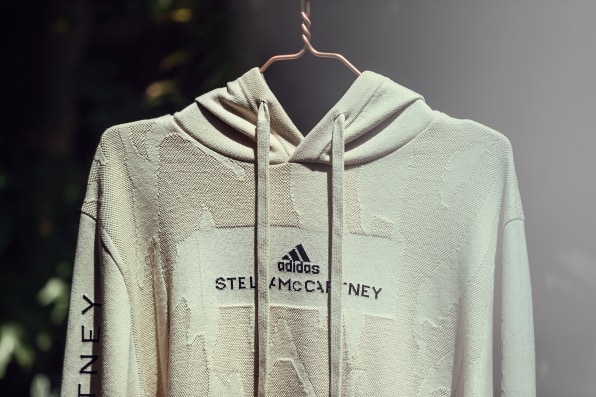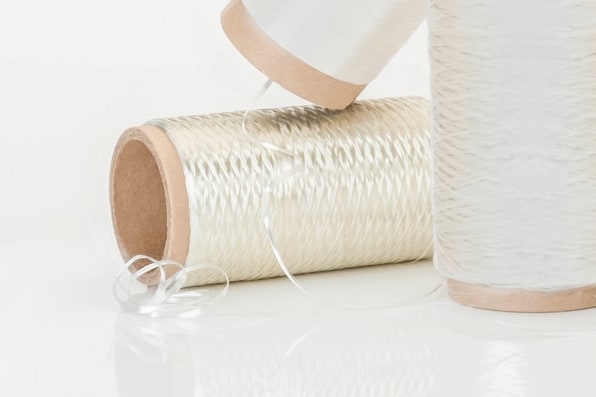For Adidas, Stella McCartney is making new clothes by liquifying old ones
Before it became a hoodie, the material in a new Adidas by Stella McCartney top might have had a previous life as part of a T-shirt or a pair of jeans. The limited-edition sweatshirt is the first commercially produced garment to use new technology that purifies and liquifies old cotton to transform it into new material.
The tech, called NuCycl, “essentially turns old clothing into new, high-quality raw materials for the creation of new clothes,” says Stacy Flynn, cofounder and CEO of Evrnu, the company that developed the technology. It’s one attempt to deal with the growing problem of waste from fashion. In a year, the world throws out an estimated 92 million tons of textile waste. In a little more than a decade, that number could increase by 60%. “Our goal is to convert that garment waste into new fiber, so that we eliminate the context of waste in the supply chain,” Flynn says.

Recycling cotton isn’t new—if you take an old pair of jeans to Madewell, for example, they’ll donate them to Habitat for Humanity or another organization for recycling as housing insulation. But making old fabric into new yarn strong enough to be remade into clothing is a much harder challenge. Mechanical recycling, or chopping up fabric into smaller pieces, weakens it. Evrnu’s process uses a chemical process instead. “We’re breaking these materials down to their polymer form and building them back up,” Flynn says. Garment waste is turned into a pulp, liquified, and then pushed out of a 3D-printer-like extruder to form new yarn.
The new hoodie, made from a blend of the new yarn and organic cotton, uses fabric with a complex jacquard knit. “It’s demonstrating that not only can we salvage these resources from going into landfills or incinerators, but we can actually create higher performing material than the materials may have been in their original form,” Flynn says.
The startup, founded in 2014, has been working with brands over the past few years to make early prototypes using its technology. The new collaboration with Adidas is the next step before going to market, as a small collection of 50 hoodies will be given to athletes. Though the company couldn’t share an expected date for brands to start selling clothing made with its technology in stores, Flynn says that it hopes to “get out of prototyping” in 2019. The company doesn’t manufacture fabrics itself but works with brands to develop custom fabrics, then licenses its technology to garment factories.

It’s one of a handful of startups working on similar technologies both to address the issue of clothing being trashed and the challenges of making new materials in the first place—growing cotton, for example, is heavily irrigated in regions that are struggling with water shortages. (The Aral Sea, which was once one of the largest lakes in the world, dried up by 2014 in part because of intensive cotton production nearby.) In landfills, old clothing can release methane, a potent greenhouse gas. Spinnova, a Finnish startup, is working on another process that can fully recycle old clothing. Renewcell, Ambercycle, Worn Again, and others are also working on technology to recycle textiles.
In theory, the fashion industry could operate as a closed loop, though Flynn believes that because demand for clothing is rapidly increasing, traditional production will still be necessary. Recycling clothes could make it possible to fill the gap created by that growing global demand. “Right now, it’s just a one-way street: We’re taking a lot of the resources, but we’re not replenishing at the levels that we need to replenish in order for the foundation of the supply chain to be healthy and thriving into the future,” she says.
For apparel companies, using this type of material is both a way to prepare for potential supply-chain shortages in the future and respond to consumers who want to buy more sustainably produced clothing. Flynn argues that new recycling technology can help tackle the problems created by fast fashion. “If we can rethink how we are leveraging technology, we can actually take a business model like fast fashion and use it as a catalyst for positive environmental and human effect,” she says.
(13)



